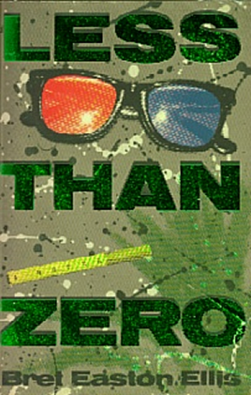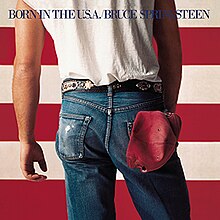http://www.nytimes.com/1985/06/08/books/books-of-the-times-the-young-and-ugly.html
NEW YORK TIMES
Michiko Kakutani
June 8, 1985
‘This is one of the most disturbing novels I've read in a
long time. It's disturbing because the 20-year-old author draws a knowing
portrait of adolescence that is almost entirely defined by hard drugs, kinky
sex and expensive clothes. And it's disturbing because these kids - who are as
young as 13 and 14 - are not only living a life out of a Harold Robbins novel,
but have also acquired, at their brief age, a cynicism that makes, say, James
Dean in ''Rebel Without a Cause'' seem like a Pollyanna.
According to the book jacket, Bret Easton Ellis is a student
at Bennington College who grew up in Los Angeles, and his slick, first-person
narrative encourages one to read the novel as a largely autobiographical
account of what it's like to grow up, rich and jaded, in Beverly Hills today.
If Mr. Ellis's story seems grossly sensationalistic at times -among the events
described are a gang-rape of a 12-year-old girl - it also possesses an
unnerving air of documentary reality, underlined by the author's cool, deadpan
prose.
The narrator, Clay, and his friends - who have names like
Rip, Blair, Kim, Cliff, Trent and Alana - all drive BMW's and Porsches, hang
out at the Polo Lounge and Spago, and spend their trust funds on designer
clothing, porno films and, of course, liquor and drugs. None of them, so far as
the reader can tell, has any ambitions, aspirations, or interest in the world
at large. And their philosophy, if they have any at all, represents a particularly
nasty combination of EST and Machiavelli: ''If you want something, you have the
right to take it. If you want to do something, you have the right to do it.''
The parents of these kids are mostly successful Hollywood
types -cliches of all the worst aspects of L.A., they have capped teeth, lifted
faces and vacant souls. They consult astrologers, gulp down pills, swig white
wine, and carry on sordid little affairs - thoroughly oblivious, as Mr. Ellis
makes clear, to their children's unraveling lives.
Instead of questioning or rebelling against their parents'
values, however, the kids in ''Less Than Zero'' seem to have adopted them in
spades: They, too, are thoroughly narcissistic - they spend a truly astonishing
amount of time shopping, going to the hairdresser and worrying about such
pressing questions as ''are my sunglasses crooked?'' And they, too, are
willfully intent on numbing themselves to life - Valium, Thorazine, downers and
heroin are their favorite drugs; soap operas, MTV, and video games, their idea
of recreation. Most of the time, they are too stoned - wasted or strung out -
to remember whom they slept with the night before; too out of it to even get to
the right restaurant or right party on the right day.
''Rip does three more lines,'' reads a fairly representative
passage, ''Rip throws his head back and shakes it and sniffs loudly. He then
looks at me and wants to know what I was doing at the Cafe Casino in Westwood
when he clearly remembers telling me to meet him at the Cafe Casino in Beverly
Hills. I tell him that I'm pretty sure he said to meet at the Cafe Casino in
Westwood. Rip says, 'No, not quite,' and then, 'Anyway it doesn't matter.' ''
Mr. Ellis has a good ear for the sort of dumb exchange of
non sequiturs, bad jokes and half-hearted shrugs that pass for conversation
between Clay and his friends; and while his descriptions of Los Angeles carry a
few too many echoes of Raymond Chandler, Joan Didion and Nathanael West - his
novel contains all the requisite references to driving the highways, listening
to the desert wind and watching beach houses slide into the sea - they
nonetheless demonstrate a keen eye for grim details (the dead fish in the
Jacuzzi, the cigarette butt stubbed out on the kitchen floor, and so on) and a
sure sense of the absurd.
Still, ''Less Than Zero'' ends up feeling more like a ''60
Minutes'' documentary on desperate youth than a full-fledged novel. Its
narrative, told in fast-paced, video-like clips, devolves into a litany of
predictable scenes involving sex, drugs and rock-and-roll. And the characters
remain so alike in their aimlessness and disaffection that the reader has a
pretty hard time of it telling them apart.
Even Clay is something of a cipher - presumably we are meant
to think that he's more sensitive and well-meaning than his friends because he
abstains from raping a young girl, turns down an offer of heroin, and has
crying jags in his psychiatrist's office. But such gestures are hardly
sufficient to establish him as a sympathetic hero, and in the end, his
alienation remains undifferentiated from that of his fellow nihilists.
Unlike Clay, Mr. Ellis clearly possesses talent - and the
drive to do something with his gifts. Perhaps in his next novel, he will bring
them to real fruition - and write a story that doesn't merely depress us with
sociological reports, but also moves us with the force of its imaginative
transactions.’



















